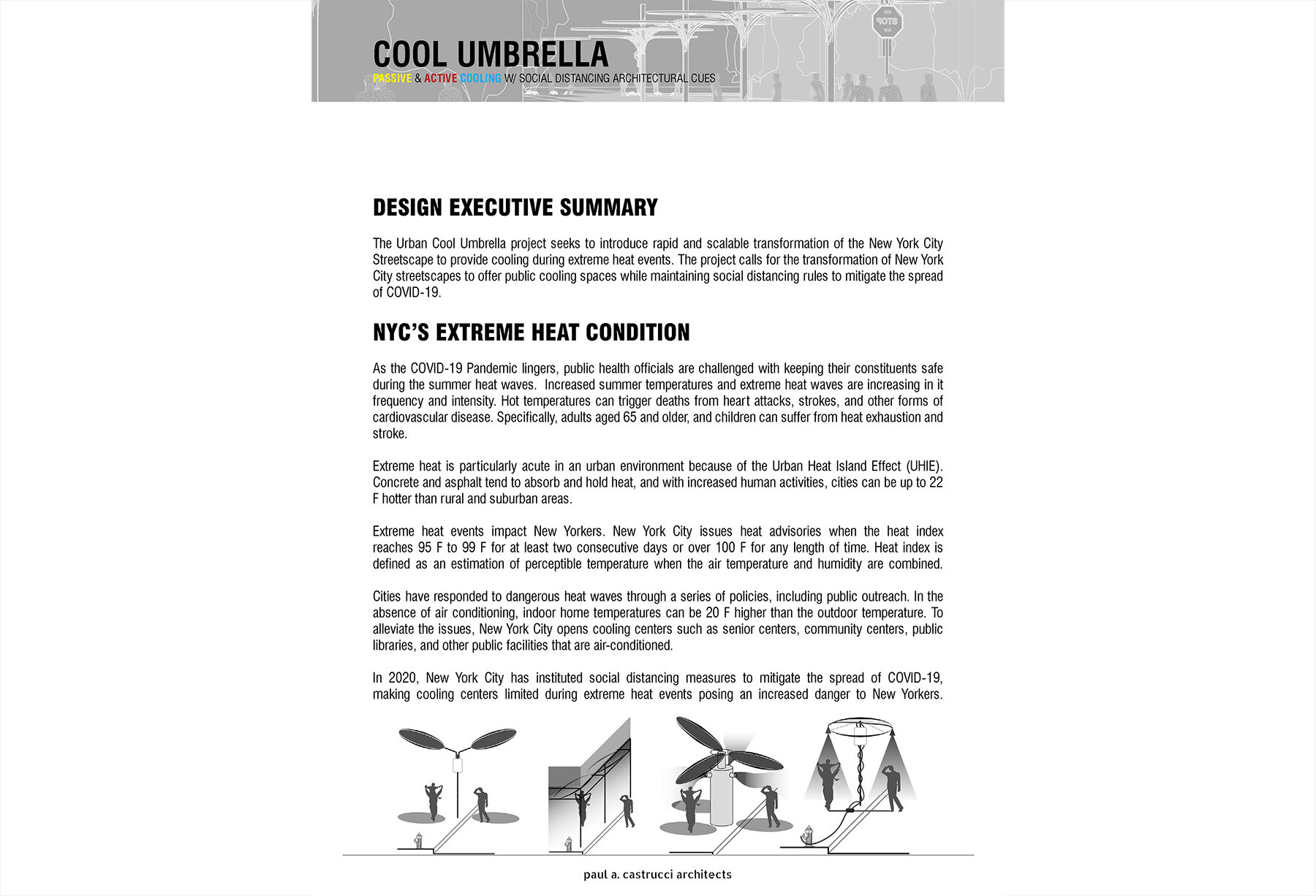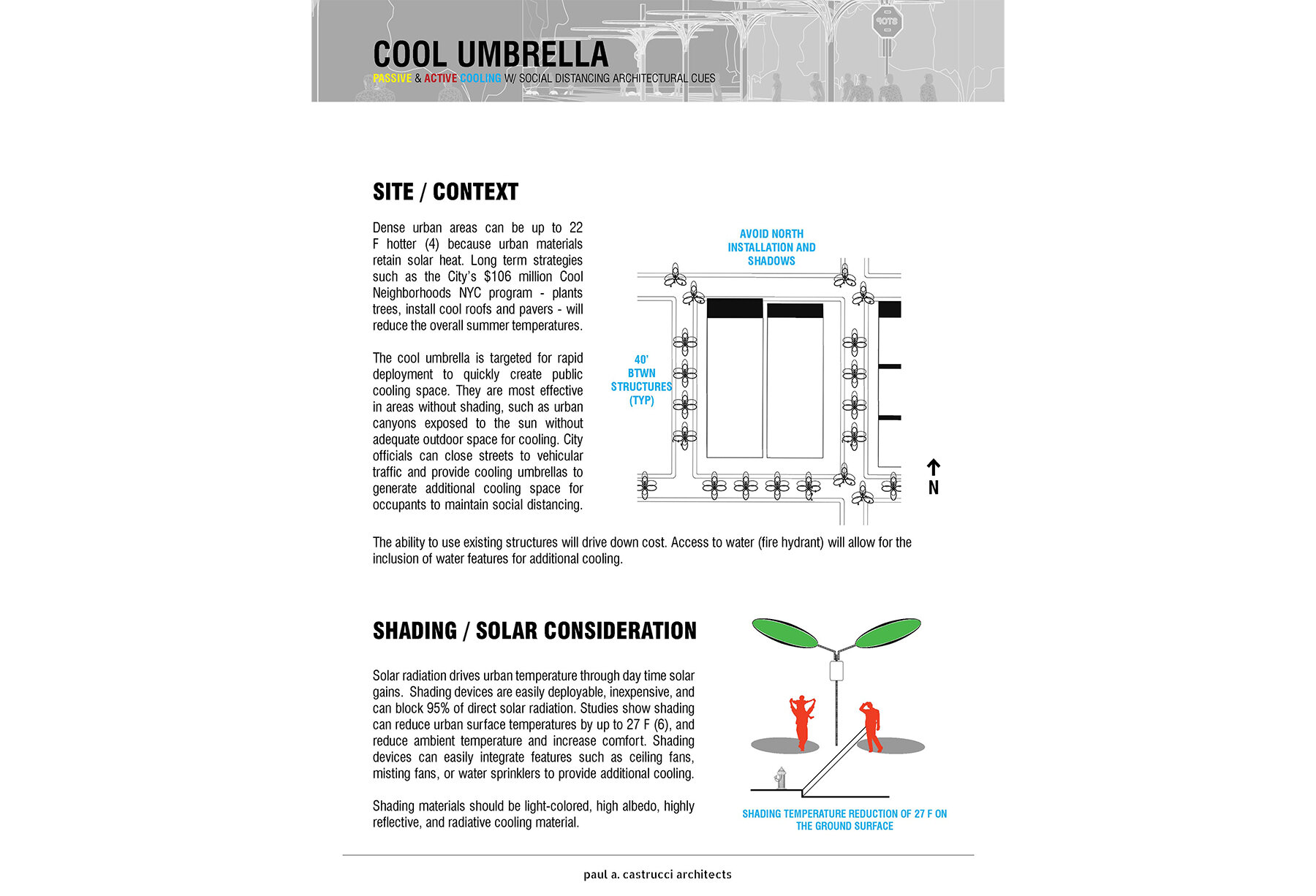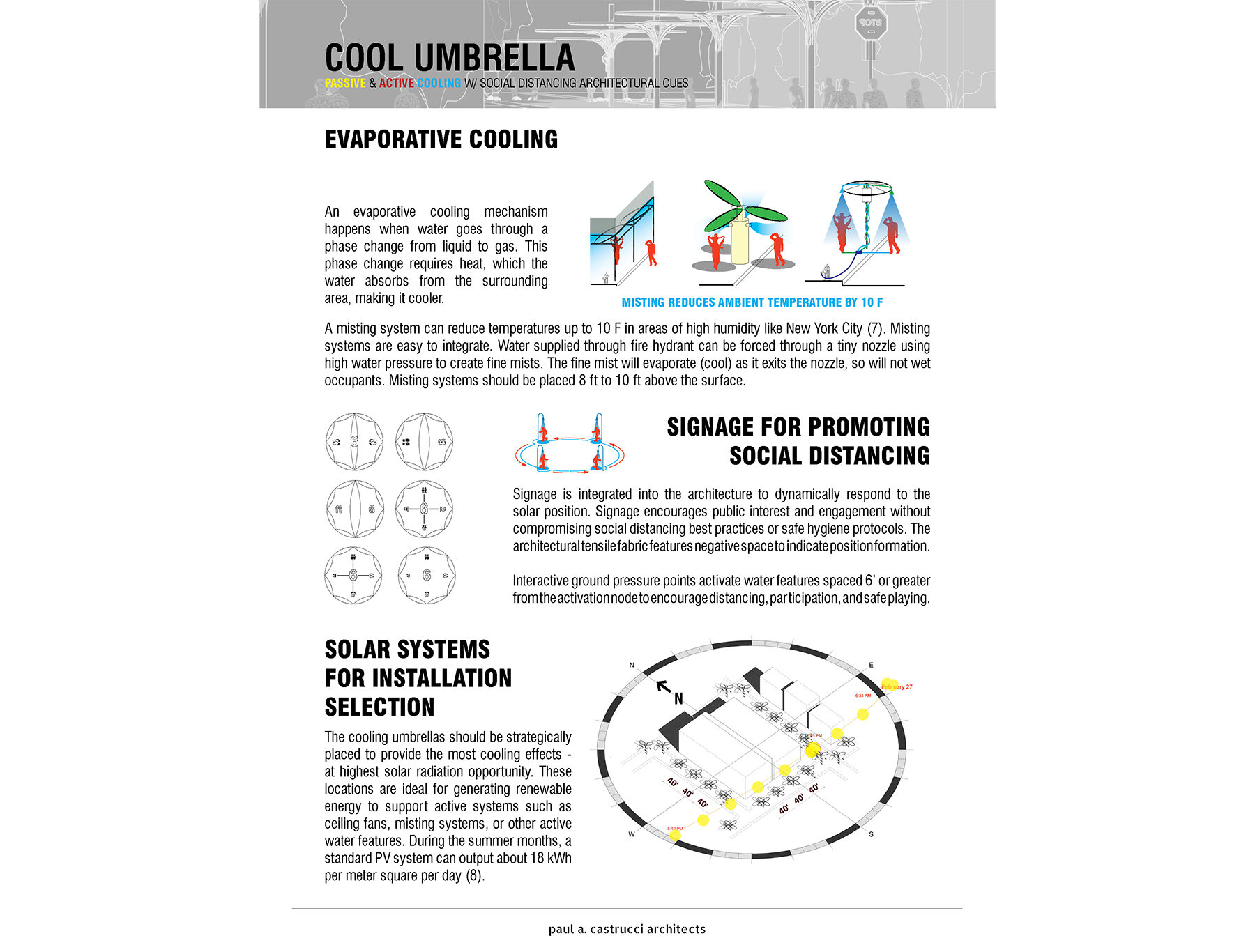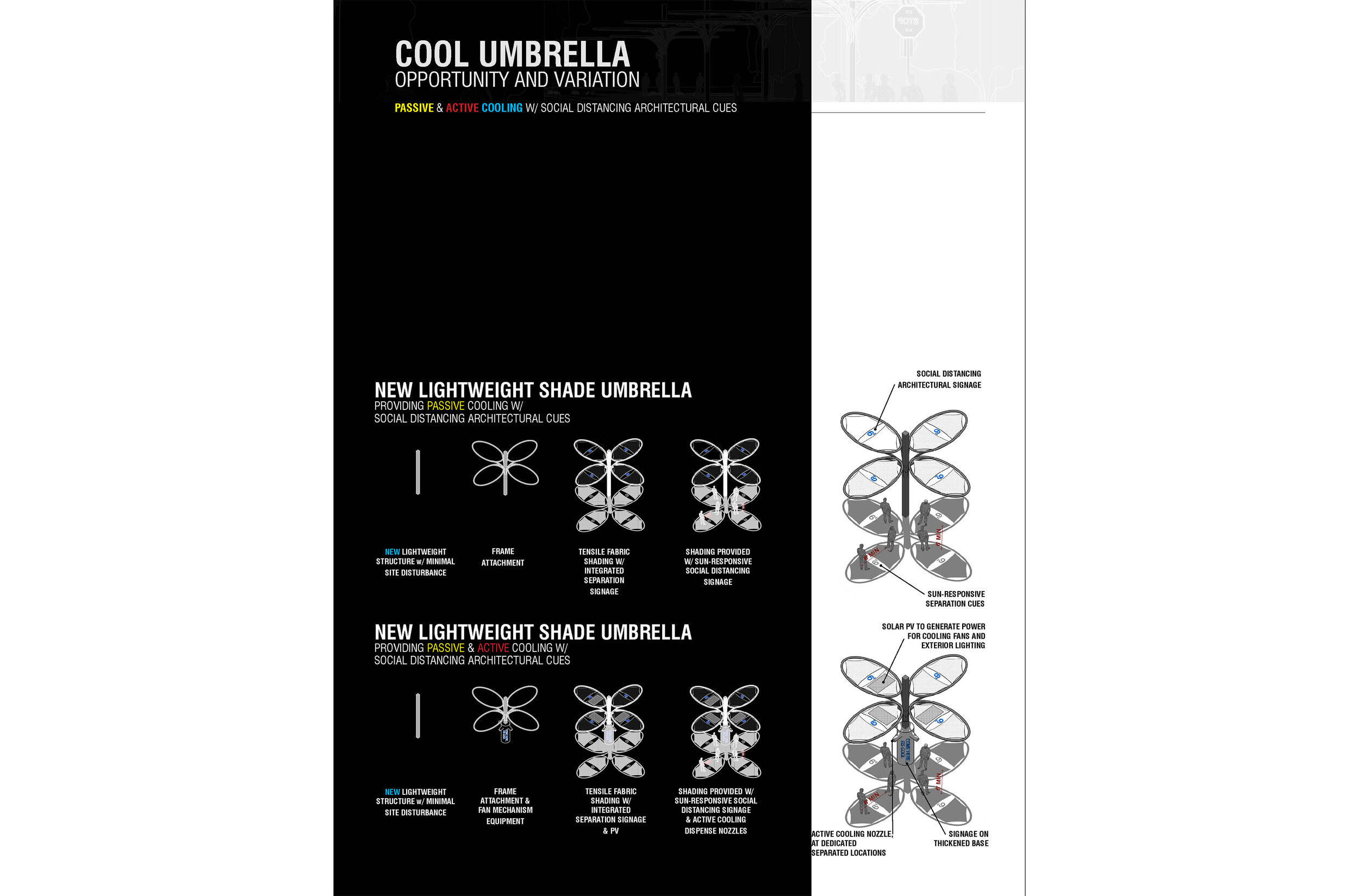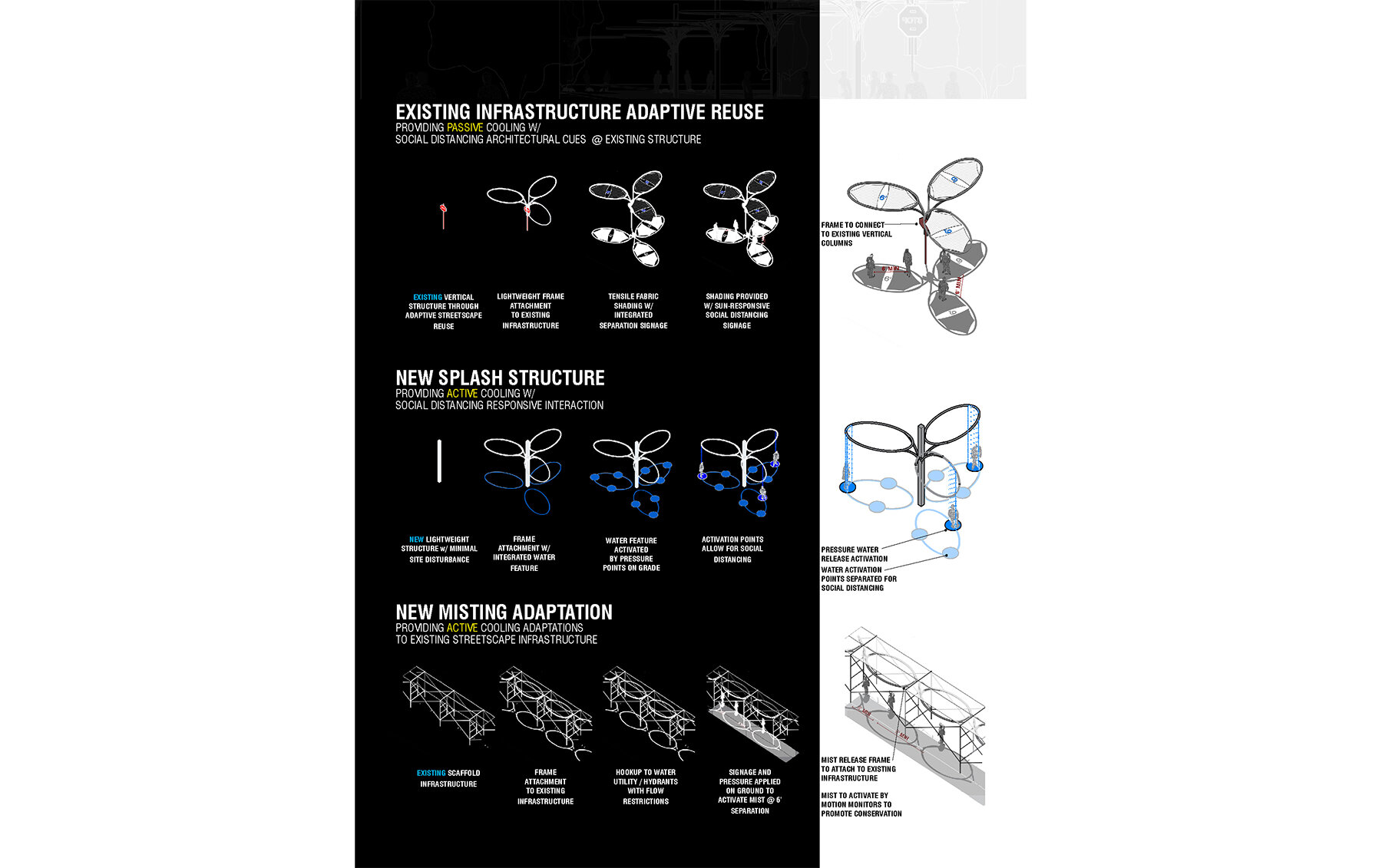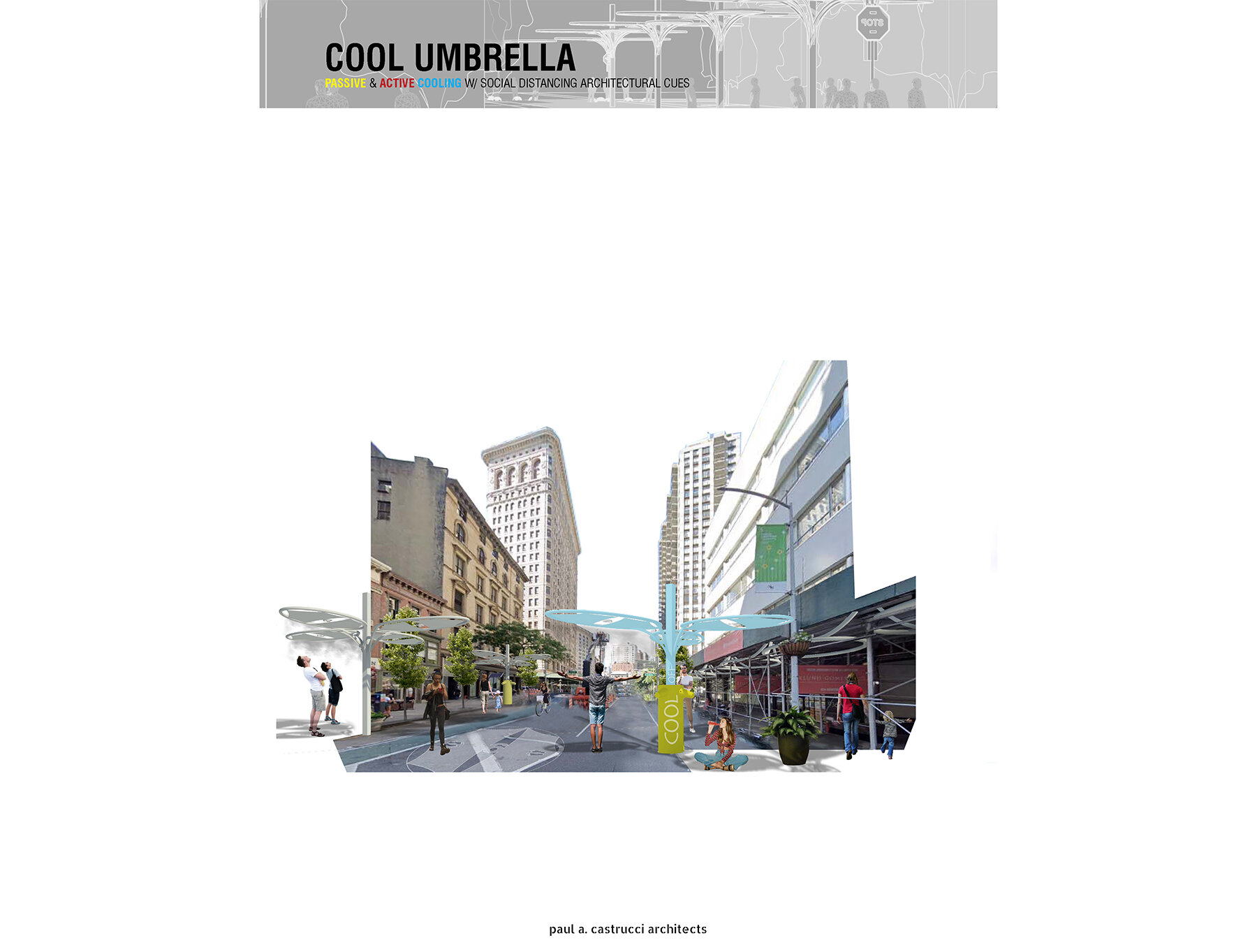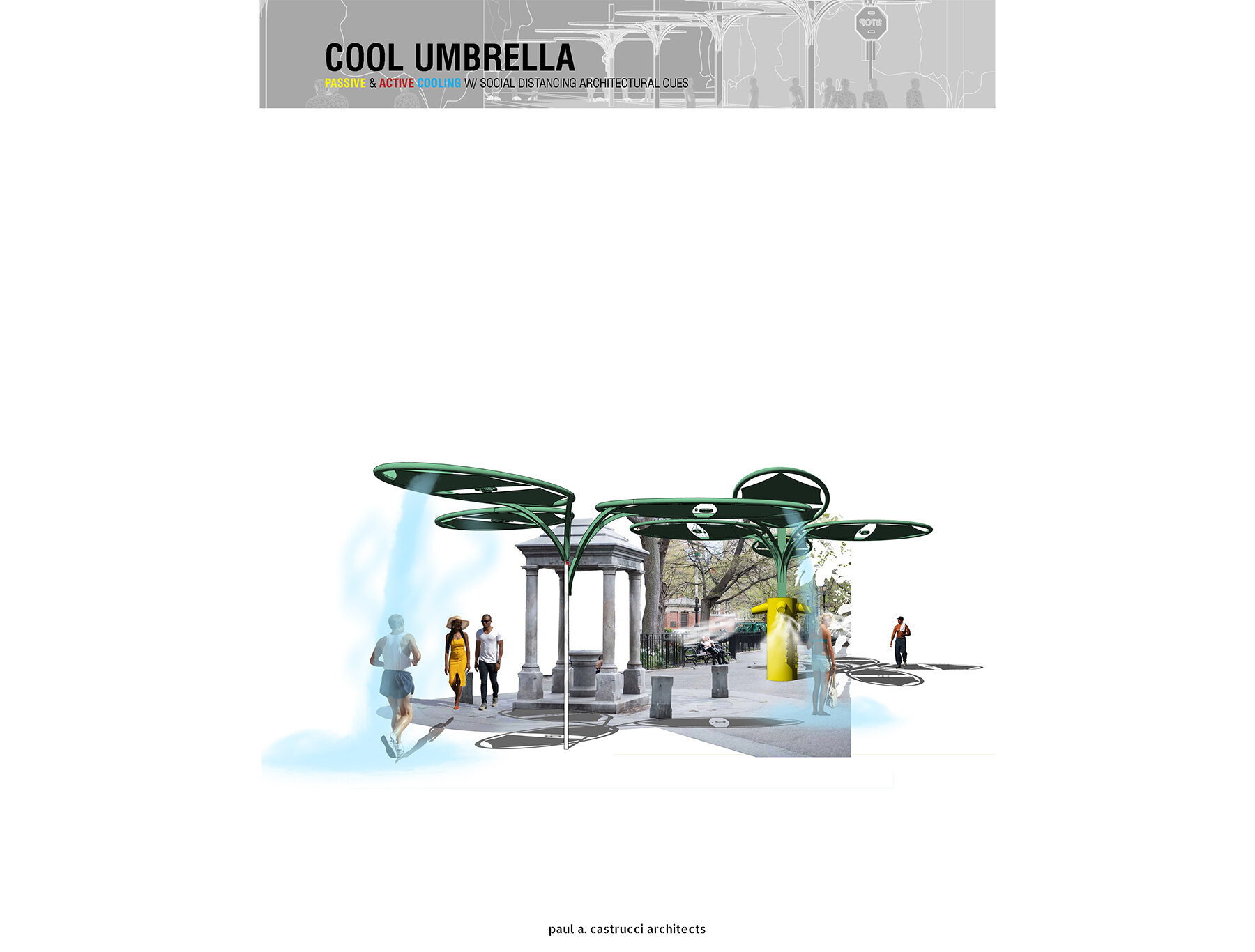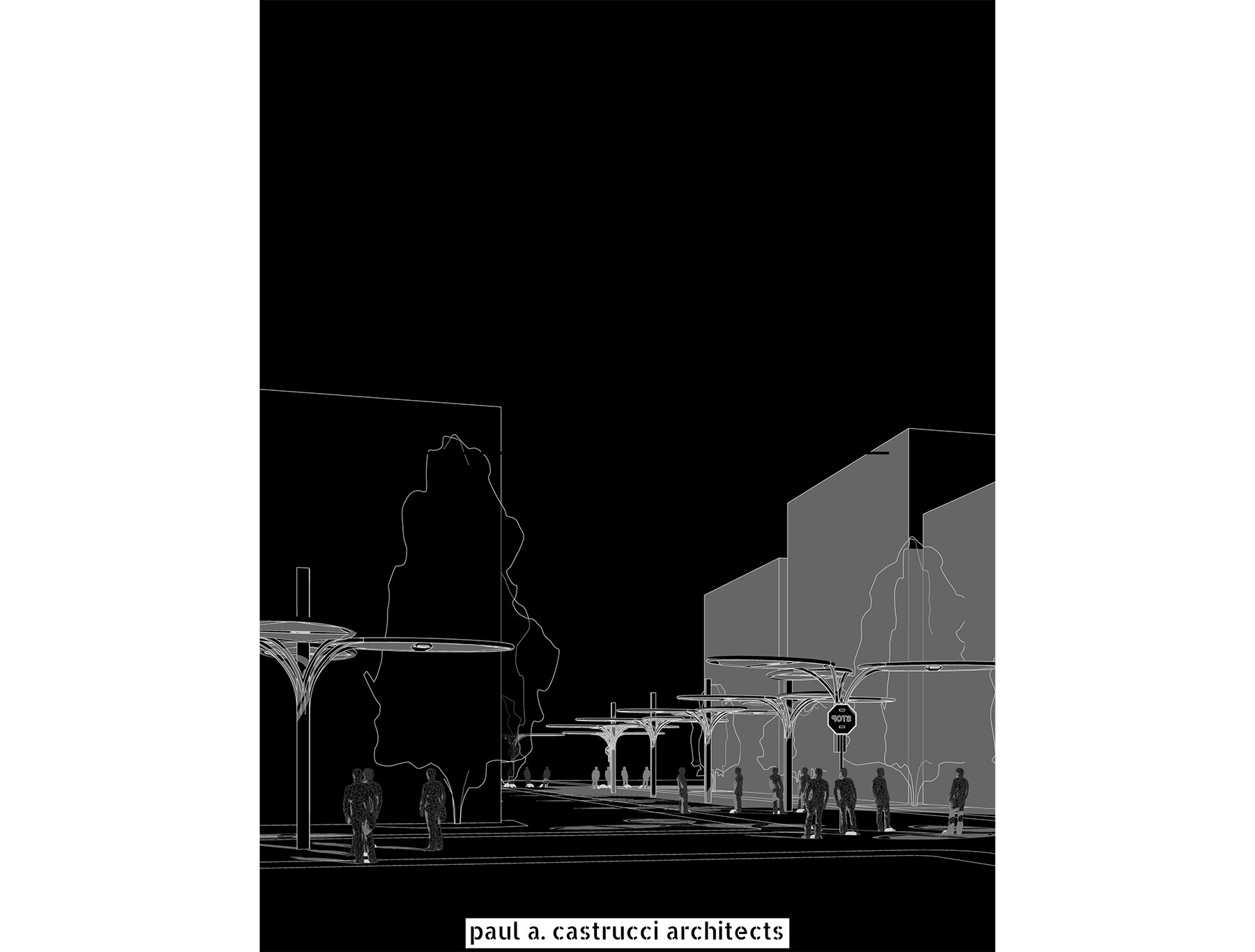Urban Cool Umbrella: Post-COVID Extreme Heat Solutions








executive summary
claiming public spaces through urban cooling infrastructure
The Urban Cool Umbrella project calls for the transformation of New York City streetscapes to address extreme heat during summertime. PCA’s design offers an alternative vision for public cooling that integrates social distancing rules while mitigating the spread of COVID-19. The Urban Cool Umbrella project seeks to introduce rapid and scalable solutions for the streetscapes, parks, and cooling centers to offer relief during extreme heat events.
The Shade Umbrella is a rapid deploy, lightweight tensile structure which can be installed in new site co-nations or connected to vertical streetscapes such as signage or scaffolding. The structure couples integrative social distancing three-dimensional signage with passive and active cooling strategies. Flexibility in installation and connections allows the structure to be installed in a vast site context, such as public street level, sidewalk, park, rooftop, or private lawn. The adaptability of the design lends itself to a wide array of installation sites, conditions, and time frames. The umbrella structure’s primary goal is to alleviate extreme heat and urban heat island effects. Deploying the structure at mass scale can inform the public’s presence in the previously car-dominated sphere and change the fabric of urban streetscape. The structure utilizes passive and active cooling to reduce temperatures. Active cooling is generated through PV activated fans trajected into zones designed for ample social distancing and water misting and deluge functions activated by ground pressure points. The versatility of public engagement ranges from passive community socializing to aqua games promoting safe interaction. Signage is integrated into the tensile structure simulating the sun’s dynamic movement by casting a visual que on the ground between the user’s positions.
By providing very needed current demand for urban public cooling relief, the product aims to reformat the dialectic relationship between the public realm and public streetscapes in the long term from growing discourse to mutually beneficial.

